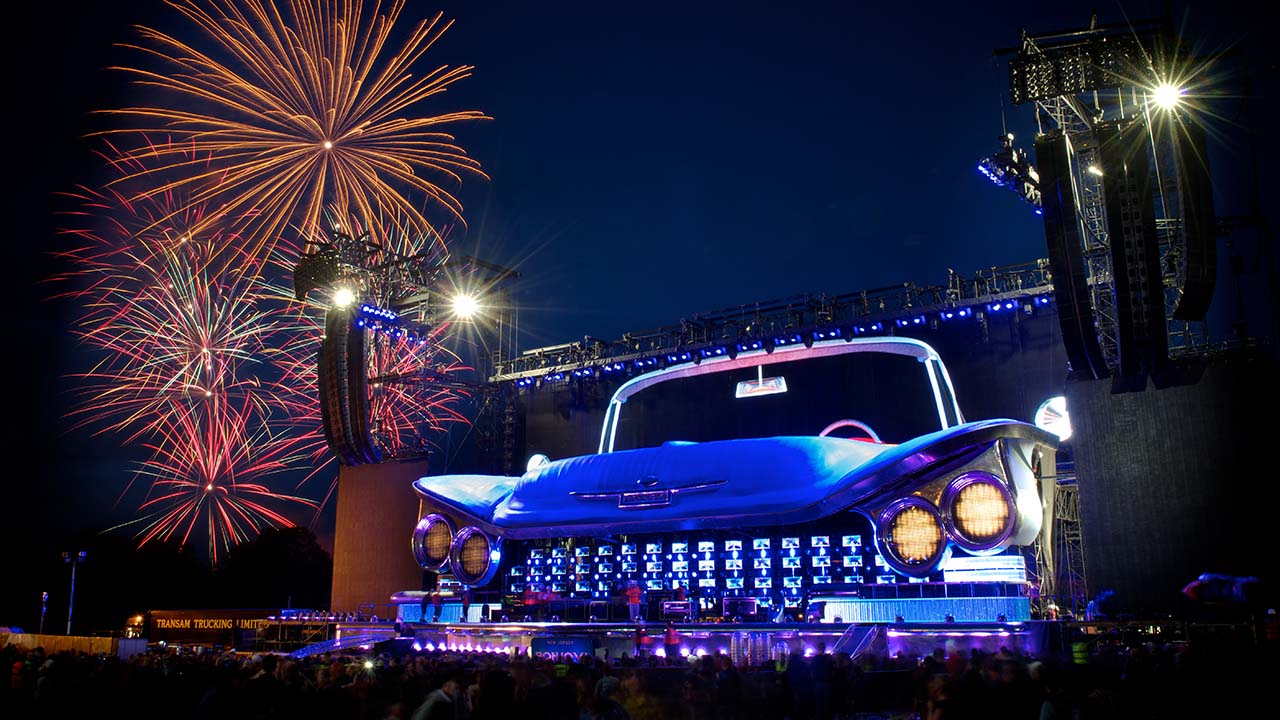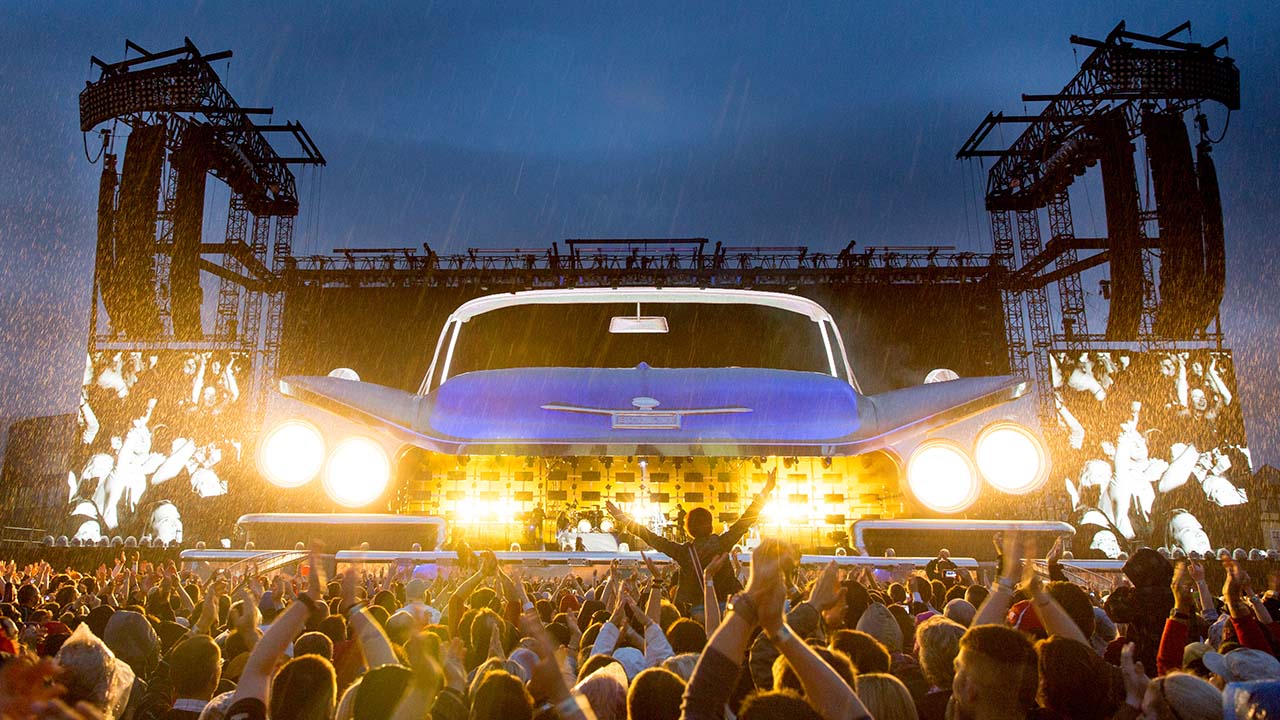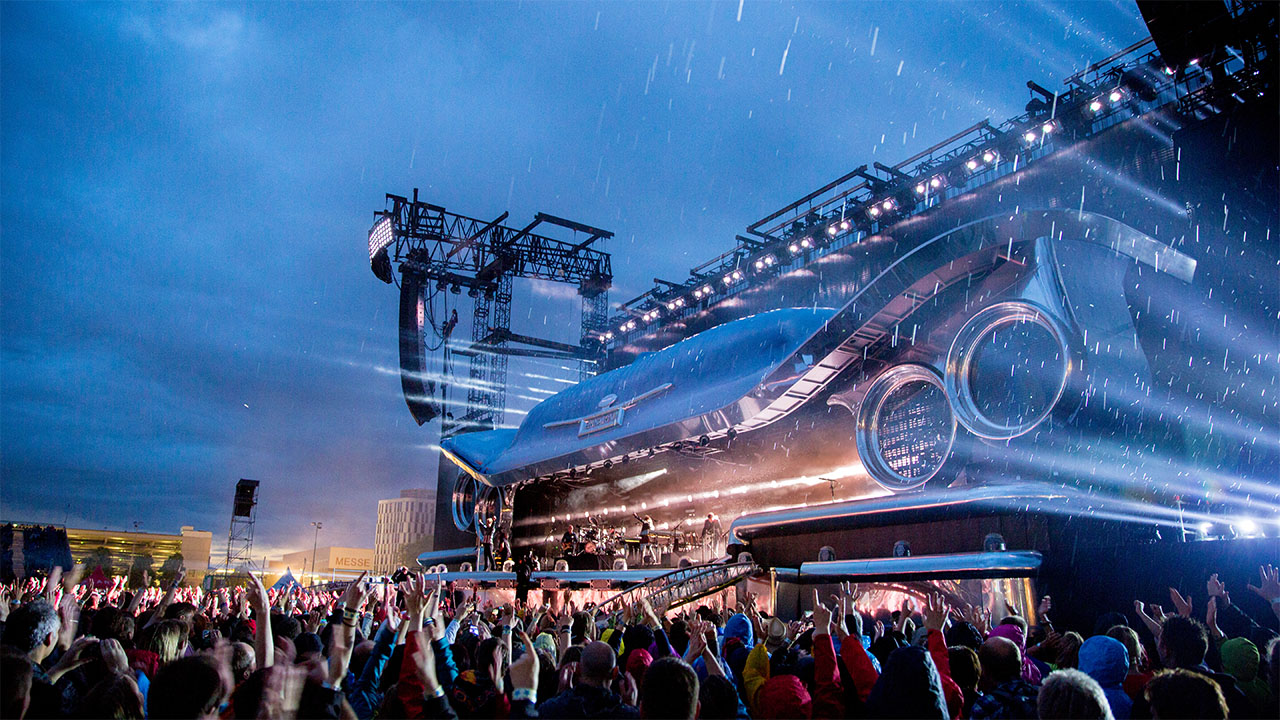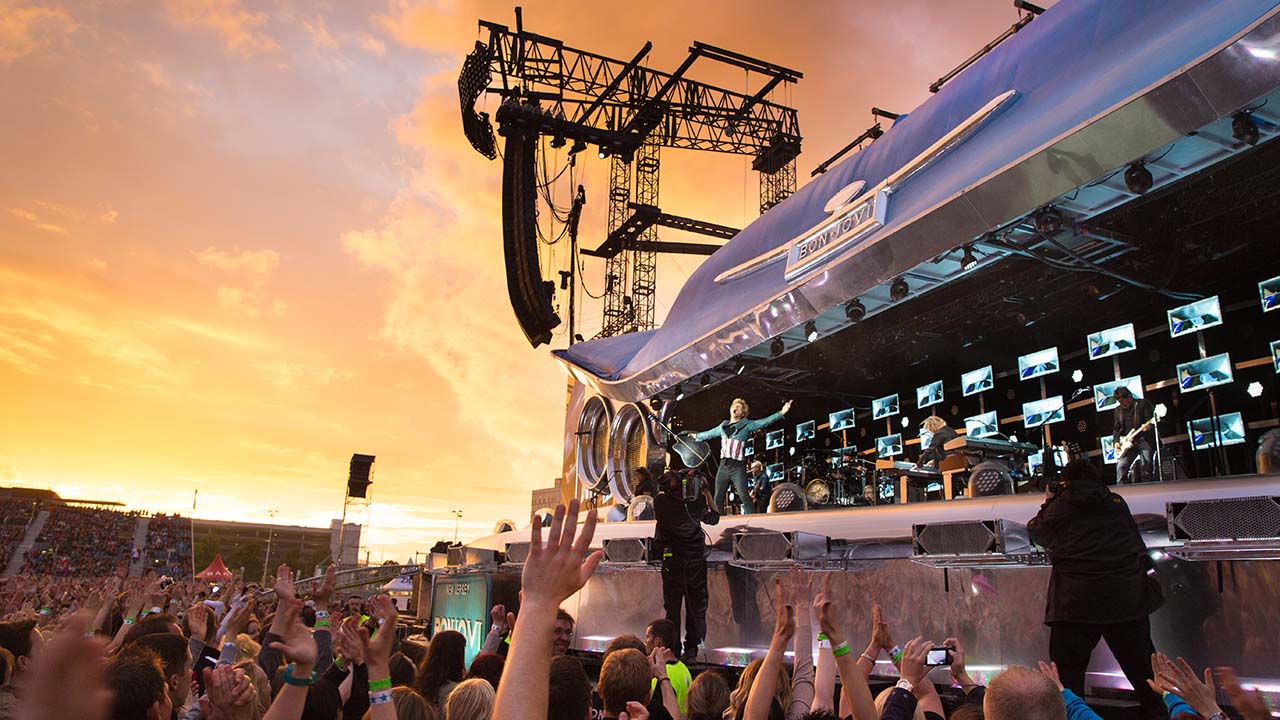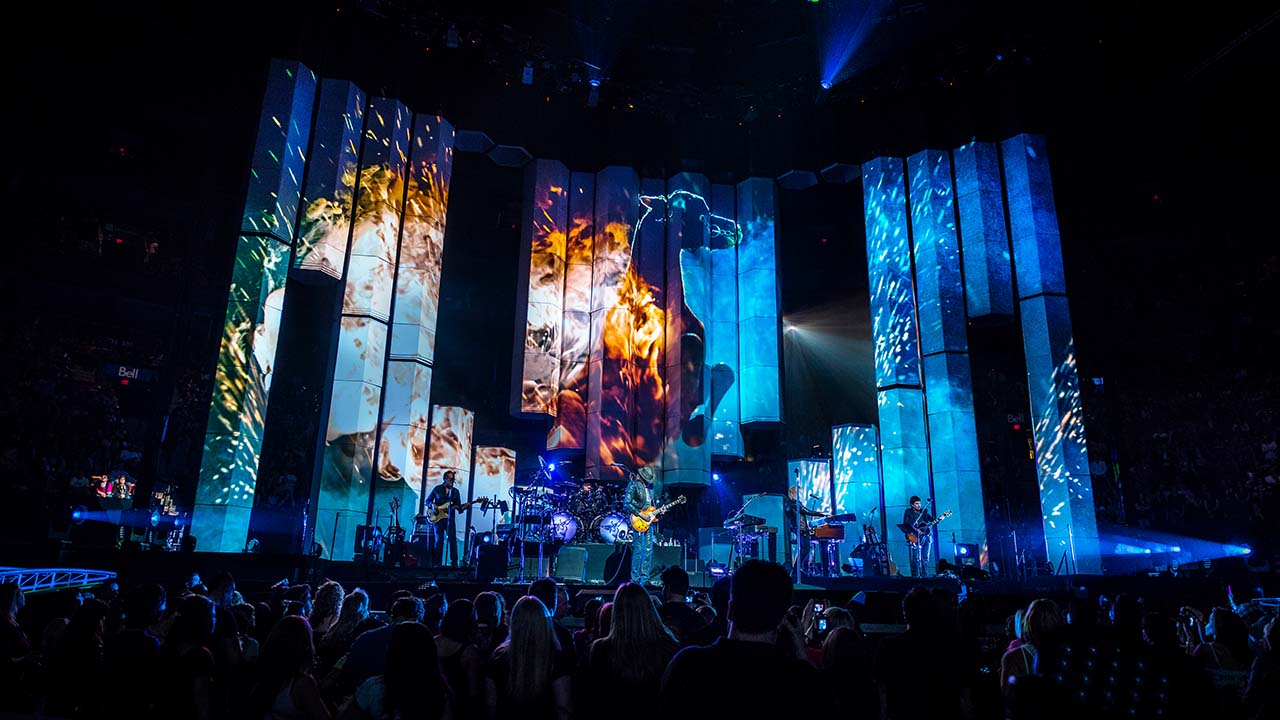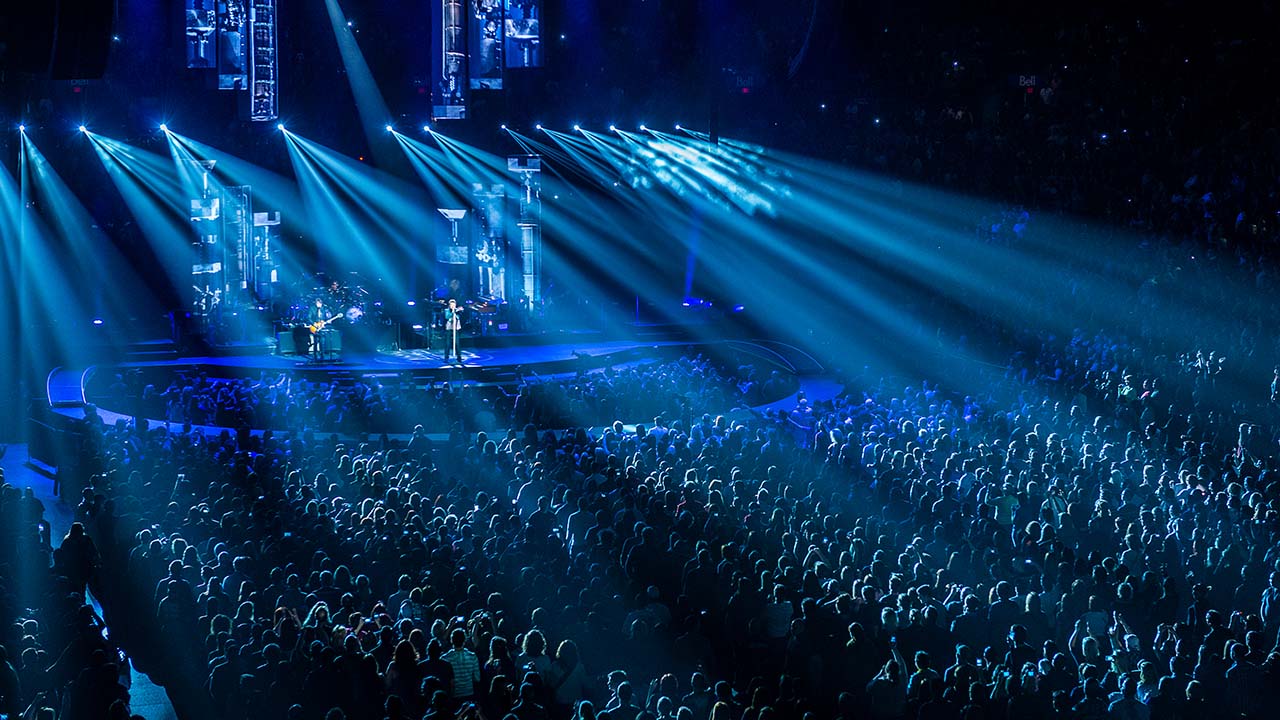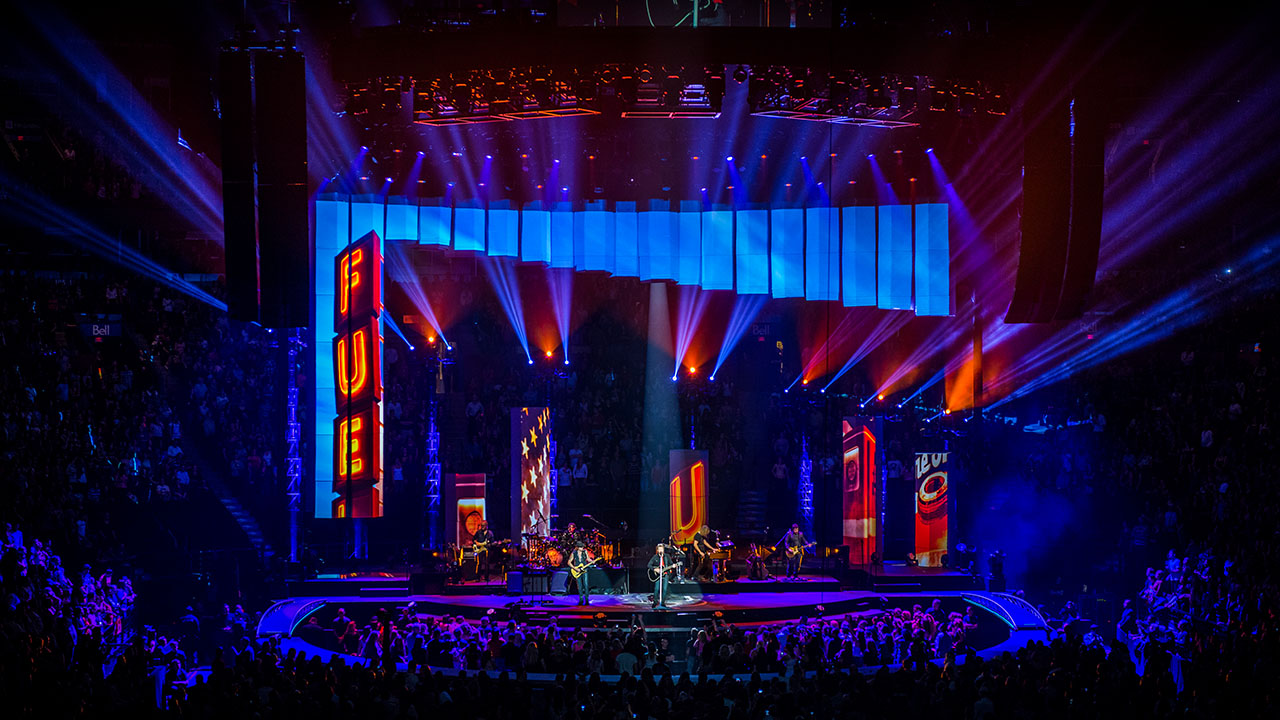Bon Jovi — Because We Can
Long-time friend of Nimblist, Bon Jovi hit six continents delivering 102 shows and taking the band to both new and familiar locations worldwide. This iconic show featured 40 independently driven, hex-shaped columns rising up from the floor and descending from the grid creating an ever-changing configuration of video surfaces and scenic elements. The overall design moved around band members like a kinetic sculpture. No two songs were on the same set or shared the same light plot giving audiences an amazing experience and the high energy show Bon Jovi is known for.
We partnered with TAIT to execute a 30-meter inflatable 1959 Buick Electra which spanned the length of the main stage for the stadium shows. The massive car included a grill section housing 60 custom video frames and custom light poles for four impressions. Four scenic car headlight surrounds were also manufactured by TAIT to be situated beneath the Buick’s cohesive and unique design.
“Over the years we’ve used the same designer. Some of our stages, he’s hit home runs, and some others he’s hit singles. This one? I think he hit a grand slam. I think this is Spike Brant’s greatest hit. It’s beautiful. My hat is off to Spike Brant. He did a great job.” – Jon Bon Jovi
Bon Jovi Tours, Inc
TAIT, Control Freak Systems, Moment Factory, Stageco, EarlyBird Visuals, BV, Clair, PRG
North America, Africa, Europe, South America, Asia, Australia
February 2013
Lighting Design, Production Design

